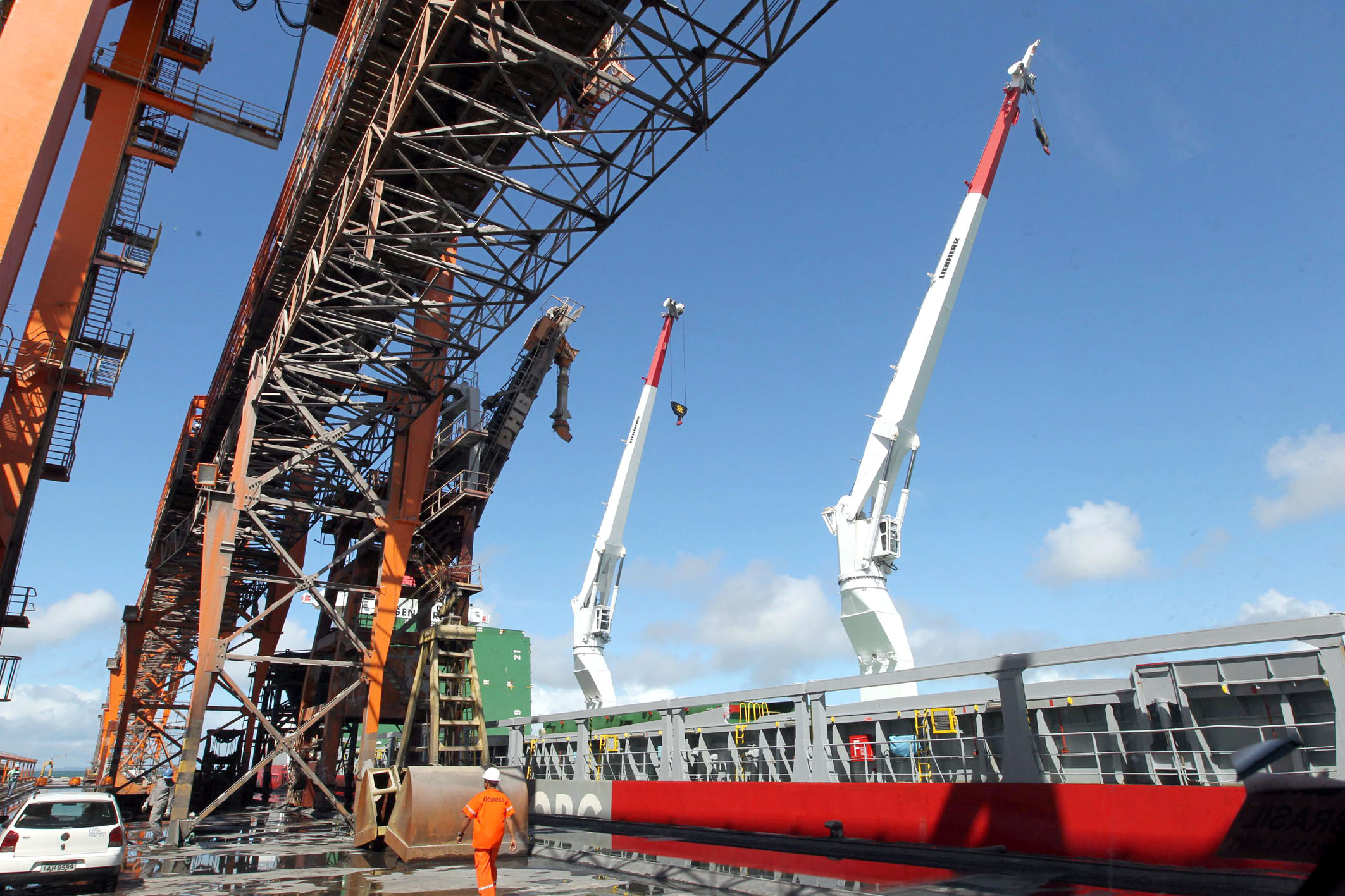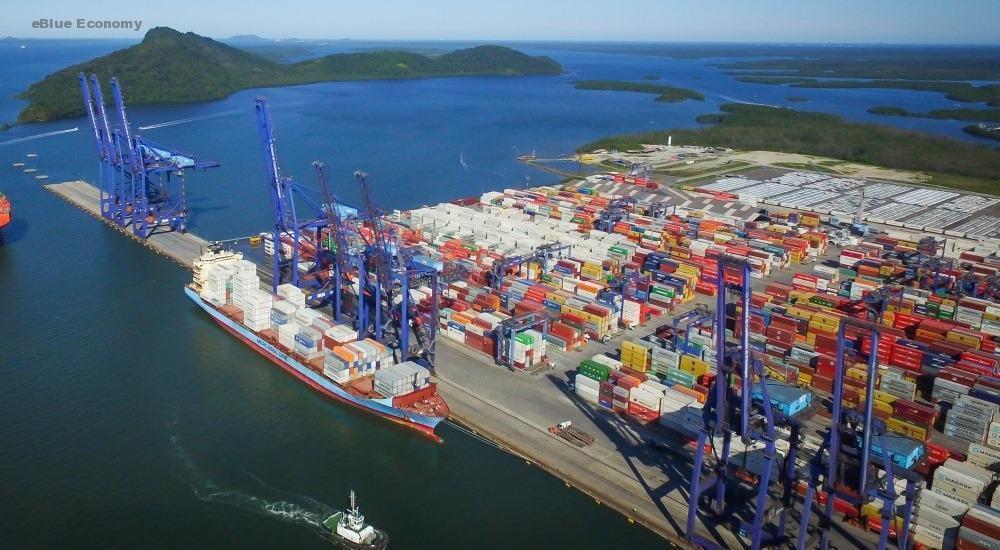The world’s fifth-largest country by area, Brazil has a coastline of nearly 7,500 kilometers. Officially known as the Federative Republic of Brazil, the largest country in South America and Latin America has a vast population of over 211 million people.
Aside from Ecuador and Chile, Brazil borders all countries in South America and covers almost half of the entire continent.
While it covers a large area along South America’s eastern coast, most of Brazil’s borders fall in the interior of the continent. The port sector of the country has an average of 700 million tons of various goods annual turnover. Hence, the ports in Brazil contribute more than 90% of the country’s trade in terms of volume.
Brazil has a total of 175 port installations, including around 32 public ports, while the rest of them are private ports. The largest and key public port in the country is Porto de Santos or Santos Port, which is situated in São Paulo state.
With a coastline of 8.500 navigable kilometers, Brazil has a very large port sector that is responsible for more than 90% of the country’s total exports and imports. In this article, we will learn more about the Brazilian port system and its infrastructural problems.
The Brazilian port system
With a coastline of 8.500 navigable kilometers, Brazil’s port sector has an annual turnover of about 700 million tons of various goods, responsible for more than 90% of the country’s exports.

The Brazilian port system is administrated by the Secretariat of Ports of the Presidency (SEP-PR) of the Ministry of Transport. The SEP-PR is responsible for the policies formulation and implementation of measures, programs, and projects to support the development of seaports. It is also incumbent on the SEP/PR to participate in strategic planning and approval of plans for granting, ensuring safety and efficiency to the maritime transport of cargo and passengers.
Out of the 34 public maritime ports under the management of SEP, 16 are administered by state or municipal governments. The other 18 are controlled directly by the Dock Companies, which are joint stock companies, whose major shareholder is the Federal Government. Therefore, they are still directly linked to the Secretariat of Ports.
The Dock Companies or Companhia Docas operating in Brazil are:
- Companhia Docas do Pará (CDP)
- Companhia Docas do Ceará (CDC)
- Companhia Docas do Rio Grande do Norte (Codern)
- Companhia Docas do Estado da Bahia (Codeba)
- Companhia Docas do Espírito Santo (Codesa)
- Companhia Docas do Rio de Janeiro (CDRJ)
- Companhia Docas do Estado de São Paulo (Codesp)
The main issues of the Brazilian port system
Since the beginning of the privatization of the Brazilian ports in 1995, the lessee companies of container terminals have invested approximately USD 1 billion in the acquisition of modern equipment, physical infrastructure, training of manpower, and infrastructure.
In particular, after the injection of resources by the Federal Government through the Growth Acceleration Program (PAC), the situation with the Brazilian ports started to improve.
Part of the dredging works in the main Brazilian ports are now finished. With the sea deeper along the ports’ area, it is estimated that around 30% of the vessels worldwide that could not dock in Brazil before, now can.
But what used to be an issue at sea, now it is an issue on land. The logistical problems of access are evident, the bottleneck of access from the cargo container terminals generate unproductive periods, which are highly detrimental to foreign trade and financial activity in Brazil. It is a fact that the rail network and roads in the vicinity of the ports are insufficient.
Another concern about the Brazilian ports is the bureaucracy. Besides making everything more expensive, slowness at Brazilian ports invented a truly “congestion at sea”. Every ship that arrives in the country waits at least 5.5 days to have the goods delivered by agencies such as IRS, the National Sanitary Surveillance Agency also known as ANVISA, the Ministry of Agriculture, and the Docks. The world’s average is three days.
In Brazil, the organs responsible for the clearance of goods run only during business hours. It is the only country among the world’s major economies, which does not have these services available 24 hours.
The most important Brazilian ports

Porto de Santos – SP
Located in the city of Santos-SP, this port is the largest in Brazil and one of the busiest in Latin America, currently serving 26 Brazilian states. The Porto de Santos is especially important for São Paulo state’s economy, around 90% of its industrial base is located in a radius of 200 kilometers from the port. The port is also responsible for 28% of Brazilian foreign trade.
Even though Santos is the most important port of the country, it is the one that has the highest number of problems, especially related with the workforce. The work schedules are always incorrect and burden the professionals. Also, the workers are constantly unsatisfied, and therefore organizing a lot of strikes.
Among the most marketed products at this port are sugar, soy, containerized cargo, coffee, corn, wheat, salt, citrus pulp, orange juice, paper, automobiles, and alcohol.
The Porto de Santos is currently administered by the Companhia Docas do Estado de São Paulo (Codesp).

Porto de Vitória – ES
Administrated by the Companhia Docas do Espírito Santo (Codesa), the Porto de Vitória is located in the homonym city, capital of the Espírto Santo state.
The Porto de Vitória is one of the Brazilian ports that lack the most investment in infrastructure, especially to enhance access for larger vessels. But despite projects being outlined, construction is still unfinished.
The idea is to turn the Vitória port complex into one of the main bases of support for the Brazilian oil and gas industry, mainly because of its proximity with producing centers and the fact that the Macaé complex is saturated.
Among the main products that circulate through the Porto de Vitória are steel products, soluble coffee beans, cocoa, cereals, marble and granite, iron, pig iron, and bulk.

Porto de Paranaguá – PR
Porto de Paranaguá is the largest Brazilian port exporting agricultural products, with emphasis on soybeans and soybean meal. However, the port is currently saturated and is not following the growth of Brazilian agriculture. The port lacks a structure to handle the current volume of exports.
Another related problem is the access routes that lead to the port, where the trucks wait in line for days until they get the opportunity to ship. Some of them can even wait for a month.
The port has also received several complaints about its irregularities when it comes to compliance with environmental and sanitary measures.
As the second-largest Brazilian port, it mainly receives ships from United States, China, Japan, South Korea, and Paraguay.

Porto de Rio Grande – RS
Privileged by its geographic features, the Porto de Rio Grande has consolidated its position as the port of the Southern Cone of South America. The port is public and administered by the Rio Grande do Sul state government.
Among the major commodities exported are soybeans, soybean meal, wheat, and rice. The main export destinations are China, Spain, Holland, Japan, and France. Among the main imported goods are urea, granular potash, natural calcium phosphate, and sulfuric acid. On imports, the main source countries are Argentina, Morocco, Lithuania, China and the United States.
The Rio Grande is one of the most developed ports in Brazil with good logistics and projects for expansion. The port is also one of the few in the country that is not saturated and has a long wharf. It is for this reason why importers and exporters are preferring to flow their production through the Rio Grande instead of Paranaguá.

Porto de Rio de Janeiro – RJ
Located on the West coast of the famous Baia de Guanabara, the Porto de Rio de Janeiro is administrated by the Companhia Docas do Rio de Janeiro.
The logistical problems of access to the Rio de Janeiro’s port are evidenced by the poor maintenance of the roads, lack of secondary access channels and of a plan that involves achieving a cleaner flow of cargo, bad distribution of the railroads, lack of investment in infrastructure and “lack of political will” to make possible a project that addresses the logistics bottlenecks that are common routes of access to container terminals in the port of Rio de Janeiro.
Despite all the mentioned problems, Rio de Janeiro is one of the busiest ports in the country in terms of the value of goods and tonnage. Iron ore, manganese, coal, wheat, oil, and gas are the main products disposed of.

Porto de Itajaí – SC
This port is administered by the Superintendent of the Port of Itajai, the local authority of the city of Itajai in Santa Catarina state. The main exported products are wood, ceramic flooring, machinery, sugar, paper, and tobacco. The main imports are wheat, chemicals, motors, textiles, paper, chicken, and ceramic flooring.
The big problem with Itajaí is the constant floods that happen in the region, bringing difficulties to its work dynamics and needing rebuilding and reform every now and then. Also, the accessing routes to the port are currently saturated.

Porto de São Sebastião – SP
Currently administrated by the Companhia Docas de São Sebastião, this port was created with the intention to alleviate the traffic in the Porto de Santos.
As Porto de Santos gets more and more saturated, the need to transfer part of its shipments to the São Sebastião port becomes evident. That is why there is a project to enlarge São Sebastião, which is currently awaiting some authority’s approval. The situation generated a standstill between environmentalists, politicians, and investors as the construction will cause damage to the environment and the local population.
The main import products are soda ash, sodium sulfate, malt, barley, wheat, steel products, machinery and equipment, coils of steel wire and general cargo. The main exported products, in turn, are vehicles, parts, machinery and equipment, steel products, and general cargo.

Porto de Itaqui – MA
Administrated by the Company of Maranhão Port Administration (Emap), the Porto de Itaqui is located in the city of São Luís, the capital of the Northern Maranhão state.
From this port, the following products are discharged: petroleum products, fertilizers, general cargo, rice, wheat, LPG, vegetable oil, rails, anthracite, and lots of projects. Exported products are aluminum, copper, ethanol, pig iron, soybean meal, manganese ore, and soybeans.
Even though it is located in a strategic area of the country and receiving a lot of investment, Itaqui is in a terrible state, lacking several reforms in its structure.

Porto de Aratu – BA
Located in the city of Candeias, in the region known as Baía de Todos os Santos, the Porto de Aratu is of great importance to the Bahia state economy. The port is administrated by the Companhia Docas do Estado da Bahia (Codeba).
The Port of Aratu receives and drains the industrial production of Bahia, most coming from the Northeastern Complex of Camaçari. The main products that circulate in the port are transport gasoline, sulfur, ammonia, naphtha, fertilizer, copper concentrate, and coal.
[doc id=50136]














